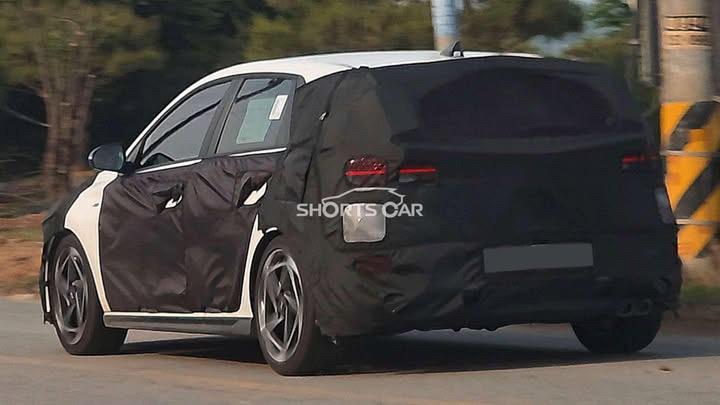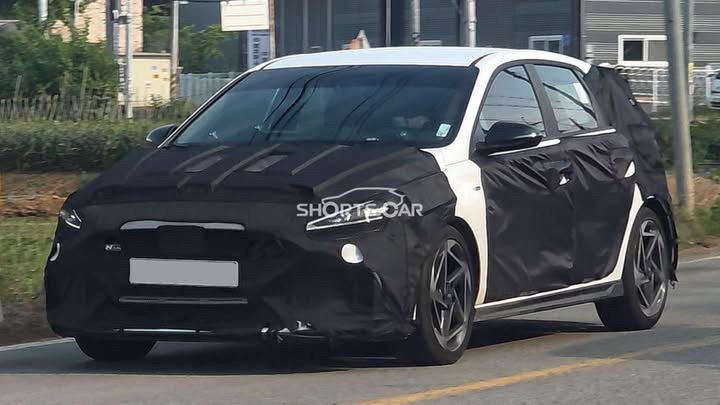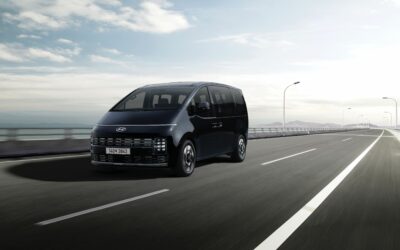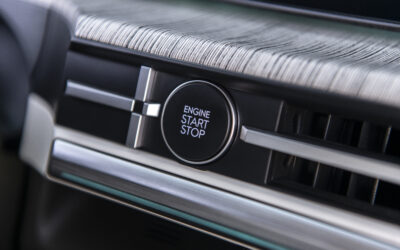The Hyundai i30, a mainstay in the European compact hatchback market, has been spied undergoing testing under heavy camouflage near Hyundai’s R&D Center in South Korea. Captured by our colleagues at ShortsCar, the prototype suggests that Hyundai isn’t done with the i30 just yet—despite the segment’s increasing shift toward electrification.
A Second Facelift or Emissions Compliance Update?
The i30 last received its second facelift in 2024 (after 2020 facelift), yet these new spy shots hint at another round of visual and mechanical updates. While at first glance it may appear to be another mild refresh, industry insiders suggest that Hyundai could be implementing design tweaks to mask more significant under-the-hood changes—possibly to meet the upcoming Euro 7 emissions standards.
The camouflage is mostly focused on the front and rear fascias, indicating potential changes to the bumper design, headlights, and grille. These modifications may serve both aesthetic and aerodynamic purposes, but more critically, they could be concealing upgrades to the powertrain or exhaust systems needed to comply with stricter emissions regulations in Europe set to take effect in 2026.
Hyundai’s Strategy: Keep the i30 Alive While Preparing Its EV Successor
According to our industry sources, Hyundai’s long-term strategy doesn’t involve a direct ICE replacement for the i30. Instead, the brand is focused to develop a fully electric hatchback that would eventually replace the i30 altogether—most likely based on the IONIQ platform or a heavily revised version of it.
This third facelift—or compliance update—may be a cost-effective way to extend the i30’s life cycle while sales remain viable. It’s a strategic move: rather than investing in an all-new internal combustion engine (ICE) generation, Hyundai appears to be maximizing returns on an existing platform before the market fully transitions to electric vehicles (EVs), a completely different strategy comparted with the i20, that will receive a new ICE generation model.

Hyundai i30 prototype was N-Line model
Why Not Go All-Electric Now?
While Hyundai has made significant progress with its IONIQ lineup, transitioning the i30 directly to an EV would require extensive re-engineering. Given the shrinking but still significant demand for ICE vehicles in certain European markets, Hyundai seems to be opting for a gradual phase-out strategy.
Moreover, adapting the current i30 to comply with Euro 7 standards allows Hyundai to keep a lower-cost alternative in showrooms, appealing to budget-conscious consumers who aren’t yet ready to go electric.
What to Expect from the Updated Hyundai i30
Although details are still speculative, here’s what the refreshed i30 could offer:
- Revised front and rear design elements
- Updated infotainment and driver assistance technologies
- Euro 7-compliant petrol and mild-hybrid powertrains
- Improved fuel efficiency and possibly lower CO₂ emissions
It’s unclear whether the update will affect the sporty N Line or full i30 N variants, but fans of Hyundai’s performance sub-brand will be eager to see if the hot hatch also receives a final encore.
Final Thoughts
The heavily camouflaged i30 prototype seen near Hyundai’s R&D Center is more than just a cosmetic update—it reflects a broader industry trend. Automakers like Hyundai are juggling compliance with increasingly strict regulations while laying the groundwork for an electric future.
This possible second facelift could be the i30’s final bow before the curtain closes on the ICE era for this iconic nameplate. Until then, the i30 remains a vital piece of Hyundai’s European puzzle—and one that’s not leaving the stage quietly.





